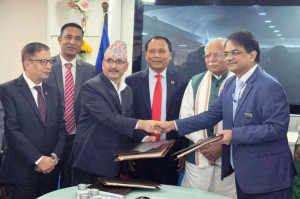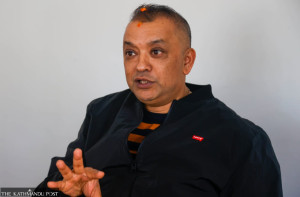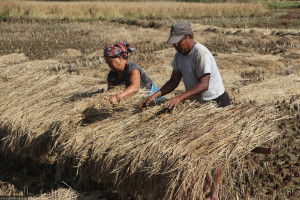Money
Fake rescue: Government eliminates dubious emergency operators
The government has chucked out all ‘intermediaries’ arranging emergency evacuation services for trekkers and mountaineers, and made the agency handling the tour package legally responsible for looking after its customers from start to finish, following revelations of insurance fraud that tarnished Nepal’s image as a tourist destination.
Sangam Prasain
The government has chucked out all ‘intermediaries’ arranging emergency evacuation services for trekkers and mountaineers, and made the agency handling the tour package legally responsible for looking after its customers from start to finish, following revelations of insurance fraud that tarnished Nepal’s image as a tourist destination.
Helicopter companies, travel and tour operators, hospitals and insurance companies will now be required to
submit details of rescue flights, medical treatment and insurance bills to the Tourist Search and Rescue Committee, Tourist Police and Department of Tourism.
The secretariat of the Tourist Search and Rescue Committee will be housed at the Tourism Department and its director general will be the coordinator. The committee will have representatives from the Home and Health ministries, Civil Aviation Authority of Nepal (Caan), Nepal Mountaineering Association, Himalayan Rescue Association and Tourist Police.
A panel formed to prepare guidelines to streamline the adventure tourism industry submitted its report to Tourism Minister Rabindra Adhikari on Friday. “The guidelines became effective from Friday,” said Ghanshyam Upadhyaya, spokesperson for the Tourism Ministry.
The government had planned to mobilize the police to rescue trekkers and mountaineers, but later dropped the idea. “We have decided that the private sector that has been leading the tourism industry should handle rescues. The police can be called in for special operations,” he said, adding that everything would be transparent from now onwards.
The intermediaries who have been acting as rescue agencies and cheating tourists have been virtually eliminated, he added.
Recently revealed insurance scams involving bogus helicopter rescues and hospital treatment of tourists
have rocked the tourism industry and embarrassed the government.
As per the Tourist Search and Rescue, Treatment and Monitoring Guidelines 2018, tour and travel agencies will be responsible for educating their customers on the potential risk involved in the adventure activities and they will be solely liable for adopting mitigation measures.
During a helicopter rescue, helicopter operators cannot transport other people except the sufferer and the helper or guide. The hospital concerned should ascertain the illness of the patient and prepare an initial cost estimate for treatment, details of which should be provided to the trekking or mountaineering handling agency.
The guidelines require airlines and helicopter operators to provide details of the number of rescue operations, place and fee charged to the committee, Tourism Department and Tourist Police within 10 days following the end of the trekking and mountaineering season.
Hospitals must provide details of the cost of treatment seven days after the patient is discharged.
“This provision will give clear details of how many rescue operations are conducted annually, and what is the annual turnover of the rescue business in Nepal,” said a department official. The government has also directed Caan to fix a cap on flight fares based on flying hours, distance and height by coordinating with insurance companies and the Airlines Operators Association of Nepal.
Recently, international insurance companies had warned the government that they would stop issuing travel insurance policies for tourists visiting Nepal from September 1 if it did not move to eliminate insurance fraud hatched by brokers in trekking and mountaineering agencies.
They said that the fraudulent helicopter rescues that are happening throughout Nepal and overtreatment that is happening in some hospitals was costing insurance companies millions of dollars every year. Insurance companies have demanded that helicopter rescue costs be capped at $4,000 per flight.
On July 30, a government fact-finding committee submitted a 700-page probe report to Tourism Minister Adhikari which stated that unscrupulous operators had been pocketing thousands of dollars from insurance companies by making multiple claims for a single chopper ride or pushing trekkers to agree to airlifts for minor illnesses.
The committee had urged the government to investigate the transactions of eight travel, trekking and rescue agencies, namely Kailash Charter Rescue, Alpine Rescue, Mountain Heli Charter Service, Eagle Heli Charter Service, Easy Heli Charter Service, Flight Connection Domestic, Mountain Rescue Service and Himalayan Social Journey Trekking.
Four hospitals, Swacon International Hospital, Era Health Centre, CIWEC Hospital and Vayodha Hospitals, and three helicopter companies, Heli Everest, Manang Air and Air Dynasty Heli Services, are being scrutinized by the government for quoting exorbitant rates and making claims against tourist insurance policies.
The committee said in its report that there had been widespread complaints of dishonest companies serving adulterated food to make tourists sick so they can be evacuated by helicopter and they can receive commissions from helicopter companies and hospitals and clinics.
According to the report, a local agent was found billing the insurance company 50,000 euros ($57,972) for evacuating a group of trekkers.
In another case, they found that a local agent issued two separate bills for one rescue. The insurance company was billed 86,248 euros. The insurance company was billed $24,000 for minor treatment in a hospital.




 13.12°C Kathmandu
13.12°C Kathmandu













